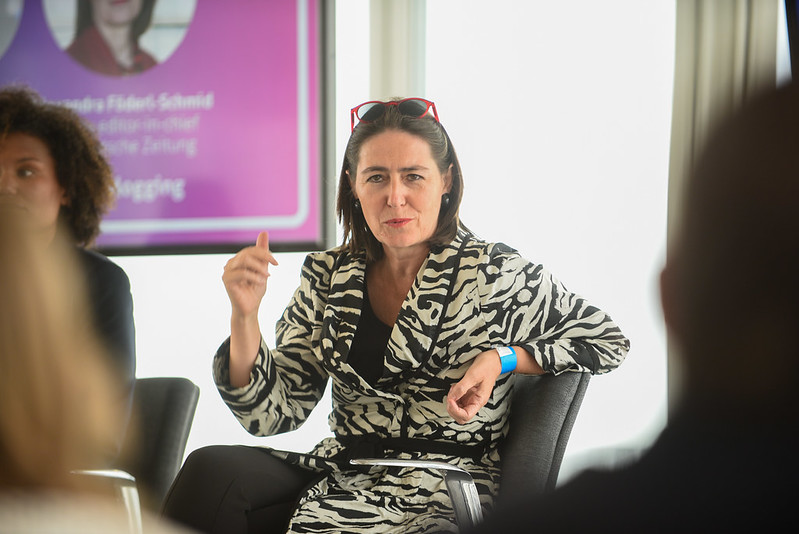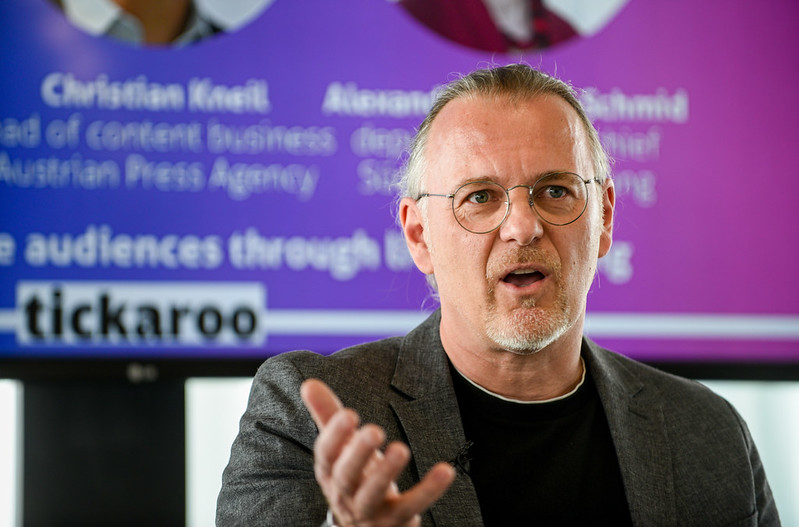
Naomi Owusu is co-founder and CEO at Tickaroo, an accessible live reporting platform. Her role at Tickaroo is to increase international growth and enable partners to reach their audiences and goals while promoting positive change within the digital media landscape.
News consumption habits have drastically changed in recent years. With the emergence of digital platforms and social media, publishers have been pitted against fast-growing technology networks and are struggling to keep a captivated and loyal audience all the while trying to make a profit.
However, it is not all doom and gloom. Consumers are aware of the spread of fake news on social platforms and the appetite for certified news is on the rise. This creates a huge opportunity for publishers to look for ways to prove the credibility of their content and strengthen journalists' profiles to build a relationship, trust and overall, loyalty.
Loyalty is an increasingly valuable metric for modern newsrooms as headaches surrounding distrust towards the news and news avoidance continue to rise. Tickaroo's recent research shows that three in ten UK adults (31 per cent) admit they do not trust the news very much, more than half trust it a fair amount (55 per cent), and six per cent do not trust it at all. This is a huge challenge for publishers: with no trust comes no loyalty.
How to captivate the audience
Modern audiences seek relevance, value and personalisation from the news - no matter how noble the goals of the news outlet are. Without these qualities, do not be surprised if audiences simply turn off the news or cancel their subscriptions.
At Newsrewired, we heard that slow journalism is a type of reporting that audiences have come to really appreciate. But equally, building loyalty can also be achieved through one of the fastest mediums: live blogging.
Live blogging is a format that grants the user a wealth of multimedia options: pulling in posts from social media for deeper engagement, tags and chapters to structure reporting, or pull quotes and reader comments to mix up the content.
On a panel at Newsrewired, two Tickaroo newsroom clients talked about their internal liveblogging strategies: Christian Kneil, head of content business at the Austrian Press Agency (APA) and Alexandra Föderl-Schmid, deputy editor-in-chief of Süddeutsche Zeitung (SZ) in Germany.
@newsrewired may be over, but we are still processing all of the incredible inspiration we received throughout the day.
— Tickaroo Live Blog (@tickaroo) June 1, 2023
Thanks to our CEO @beeskneesnews for doing a great job representing Tickaroo and to @JPGJournalism for the excellent moderation of the liveblogging panel! pic.twitter.com/Nq9XBqlaTG
Trust is a shared challenge in these countries, though the UK faces a bigger issue here. The last Reuters Digital News Report showed that just a third (34 per cent) of people in the UK trust the news. That figure is 41 per cent in Austria and 50 per cent in Germany.
"Loyalty means that they can trust the information we provide," says Föderl-Schmid. Whether people come back to the brand is also an indication of their loyalty.

Mousetrap Media/Mark Hakansson
Live blogs in action
At SZ, live blogs have performed extremely well: 7 out of 10 of the most-read articles in 2023 are live blogs about the war on Ukraine. Its top live blog on Ukraine, between 22 February and 1 March 2022, hit 4.3m users. Sports live blogs - especially football - are also very popular with readers.
APA, as the national news agency, faces a different challenge in that it needs to earn the trust of its newsroom clients. Since 2016, media organisations, political institutions and various information services have leveraged its live blogging content to meet their target groups.
The duration and topics of its live blogs vary. Its Ukraine liveblog lasted four months, accumulating 3.3m users across seven media websites, totalling 9m page views and keeping people engaged for about six minutes.
On the other hand, the Austrian Press Agency did a week-long liveblog for the Eurovision Song Contest 2023, netting 64k users across four media websites, totalling 86k page views and with a retention time of about two minutes.
It is a word of caution to pick topics carefully, as the informal nature of live blogging can work with some subjects more than others.
"We have had live blogs of a running time of half a day or three days and often they are more popular than the longer liveblogs. It’s not easy to know which will perform better - but you have to try and experiment," says Kneil.

Mousetrap Media/Mark Hakansson
A live blog has the look and feel of social media, but with more control for editors and the ability to show a broader set of views, adds Föderl-Schmid.
One of the editorial concerns with live blogging raised was the potential for bias and errors. The panel agreed that the best approach is transparency. Being open about mistakes is, in fact, an opportunity to earn the trust of readers.
We are entering a new era of digital reporting, offering a plethora of opportunities to journalists and publishers. There is an appetite for certified content giving journalists the chance to raise their profiles once again.
Live blogging enables live audience feedback and interaction and can replicate the social media experience that many consumers love. Live blogging enables journalists to show their personalities and be more open and transparent.
It also provides live feedback and an opportunity for publishers to keep delivering the content that their audience wants and loves. Over time this will build better relationships and loyalty.
Free daily newsletter
If you like our news and feature articles, you can sign up to receive our free daily (Mon-Fri) email newsletter (mobile friendly).
Related articles
- Five audience growth and revenue strategies from outside the UK
- RISJ Digital News Report 2024: User needs with Vogue and The Conversation
- RISJ Digital News Report 2024: Three essential points for your newsroom
- RISJ Digital News Report 2024: Five trends to watch in the UK
- Journalism and media events in 2024









